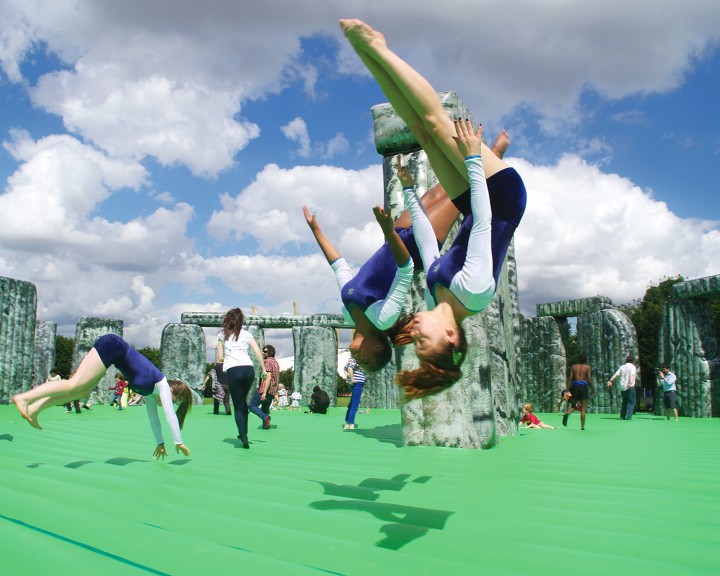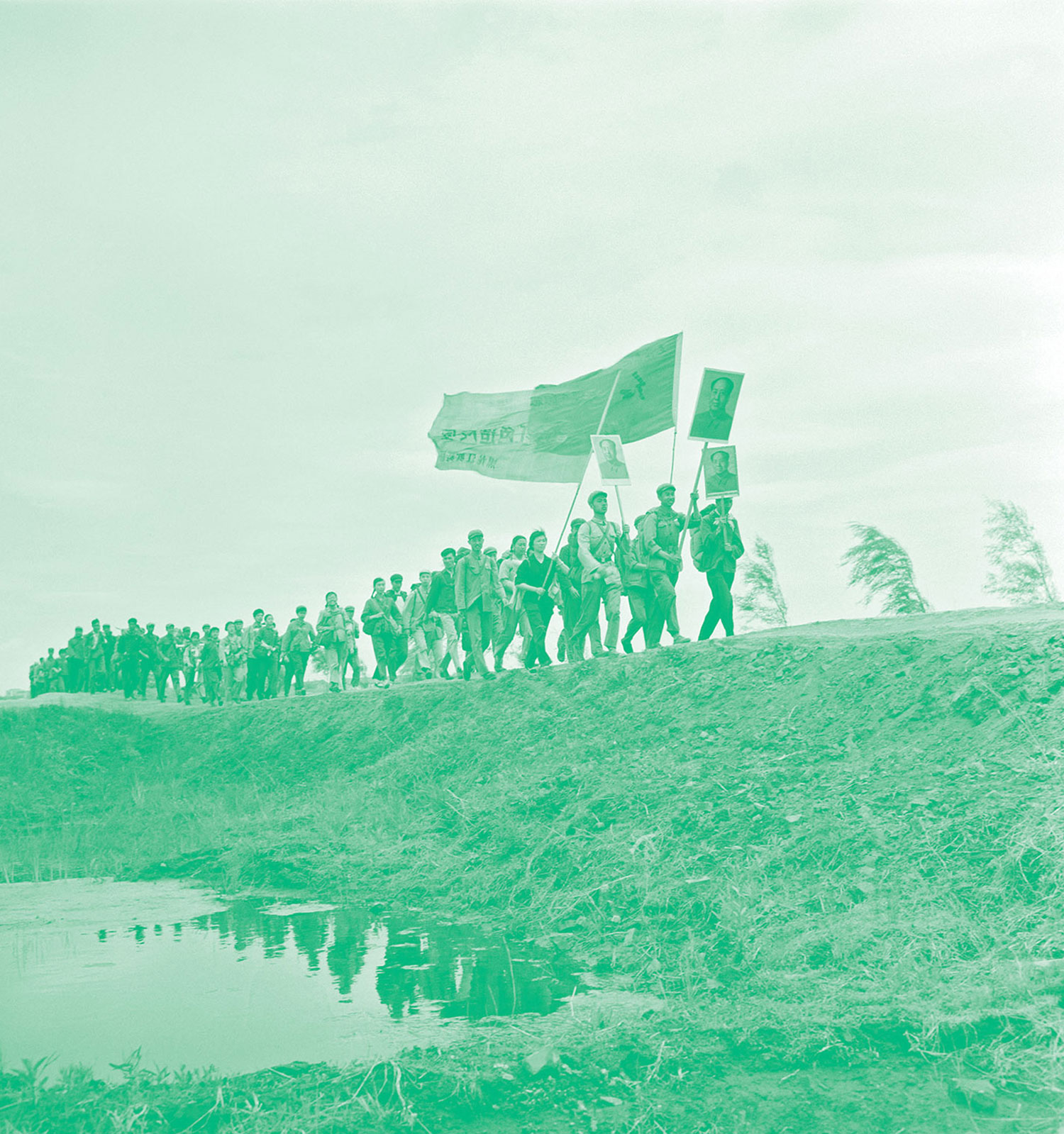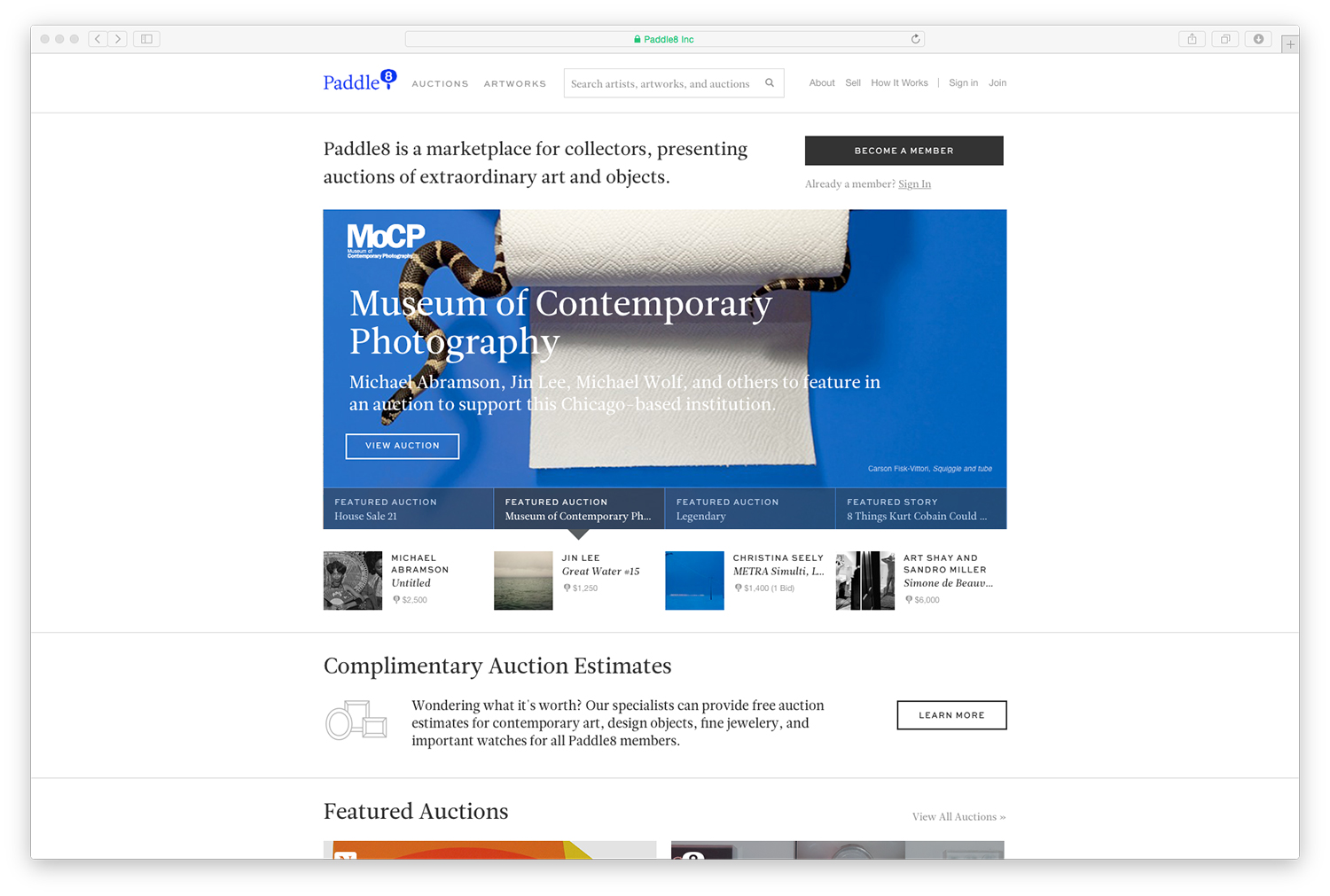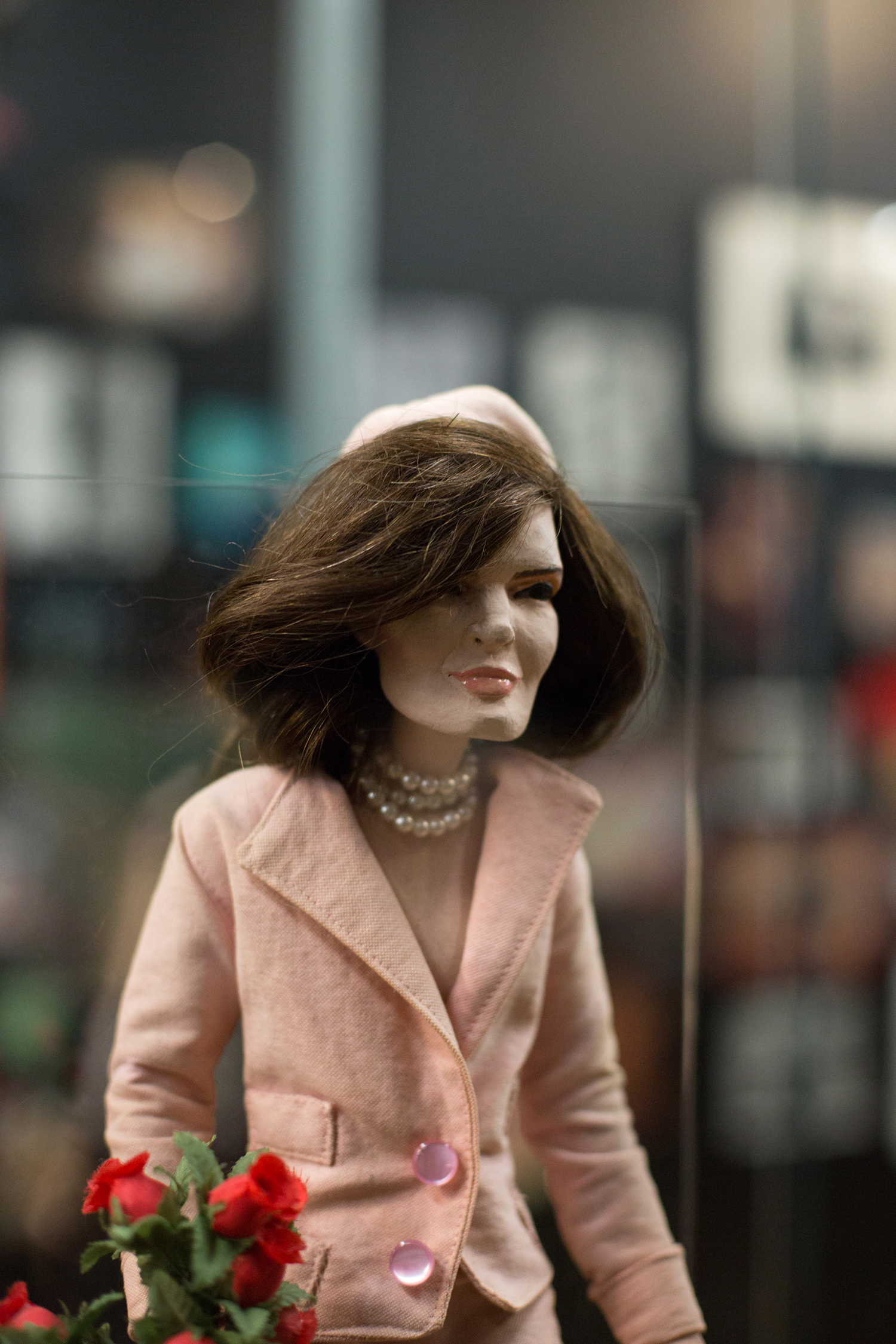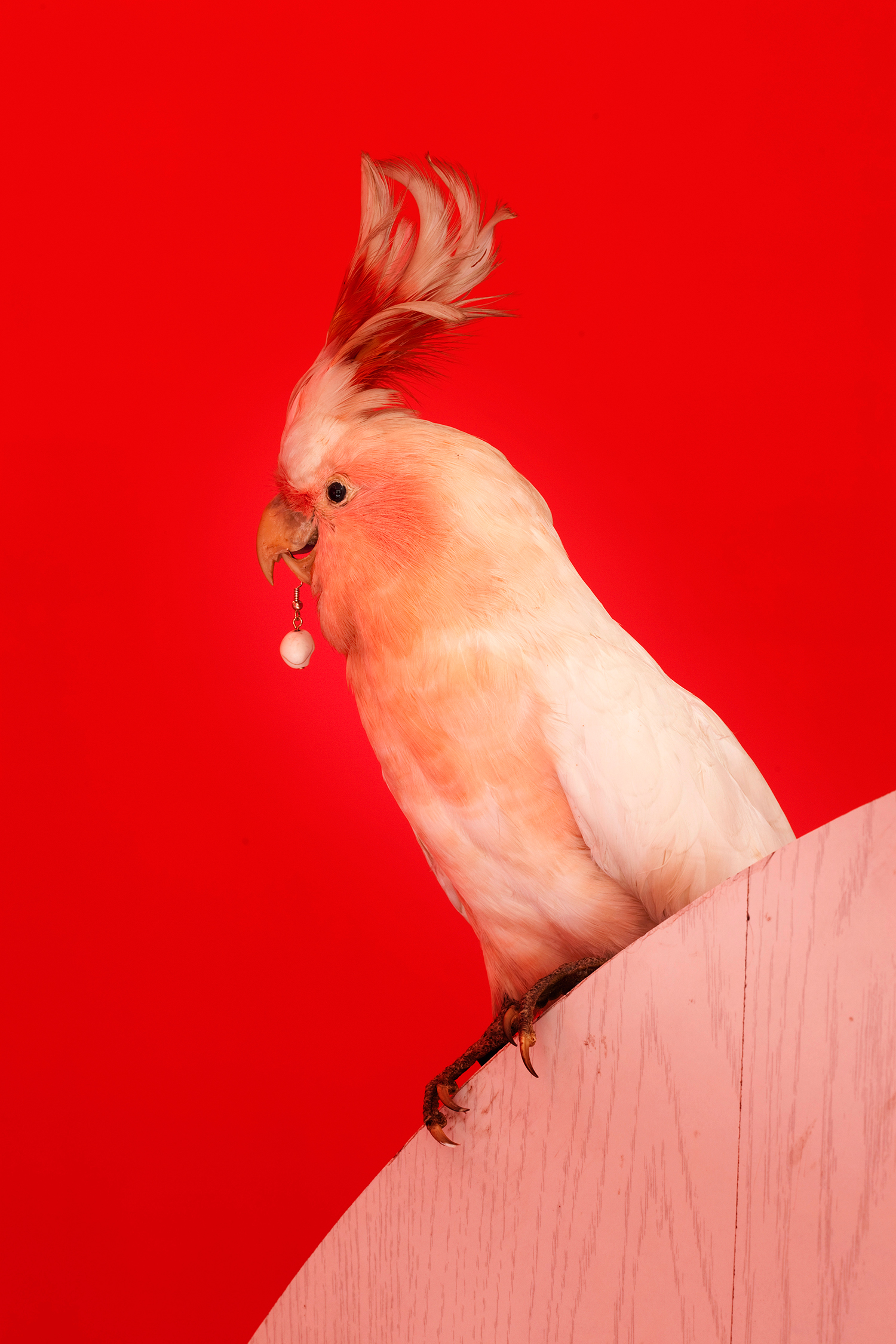
Turner Prize winners Jeremy Deller and Mark Leckey have respectively engaged with various aspects of popular and traditional British culture throughout their artistic careers. Independently, they have investigated their understanding and ideas through collaborative public art works, performances, collages and sculptures. I met with them on a wet and wintery afternoon in North London, at a café known endearingly by the local community as the Grumpy Cow, to discuss their approach to recent curatorial projects, the British class system and their shared interest in Little Richard and dub reggae sound systems.
Matt Williams: You were both recently commissioned by the Southbank to curate touring exhibitions. Jeremy, you presented “All that is Solid Melts into Air,” and Mark, you did “The Universal Addressability of Dumb Things.”
Jeremy Deller: It was a show about the Industrial Revolution and rock culture. It was a musing on the subject — it wasn’t fully coherent — which is why artists are asked to curate exhibitions, isn’t it? You get to take liberties, which curators probably can’t because it can prove detrimental to their careers!
MW: The image of the glam rock figure in full regalia standing next to a coal miner was truly striking and felt incredibly poignant.
JD: That was Adrian Street, the wrestler, with his father, a miner, at the pithead in an image of brotherly and fatherly tension — and also the tension of the UK in the 1970s as it becomes less industrial and more “showbiz.” There was also a jukebox full of sounds of industry rather than music in the exhibition. Each track, each song on it, is actually up to two minutes of factory sounds from the 1930s and 1980s. For example, the sound of a steam hammer just pounding, and so on.
MW: And how did you research and collate all of the sounds for the jukebox?
JD: I contacted lots of archives. The British Library, but also the North West Sound Archive, which is an amazing building in the middle of a castle owned by the council in Clitheroe, with these two curators sitting there with tapes and tapes and tapes. It felt like something out of a film. I couldn’t believe it existed. They continue to conduct interviews and produce material. [Editorial note: the North West Film Archive closed in November 2014. It was obviously too good to be true.]

MW: In “The Universal Addressability of Dumb Things,” images and objects from popular culture were juxtaposed with various artifacts. Was it an intuitive process when you were collating and determining the relationships between the works on display?
ML: It was a thought I was trying to populate.
JD: Because we were doing a show at the same time, almost simultaneously. I was looking at what Mark was doing; it seemed genuinely interesting. I was thinking: this is really good — I hope mine is as good as this.
ML: That is the thing, isn’t it? There is a certain point in your career when you get asked to curate a show, and it can just end up as an exercise in taste — to approach it in a kind of cool and slightly disinterested way. I didn’t want to do that. I wanted to give it my all. So, when I was invited, the first thing I did was start Googling everything, and dumping what I liked in folders, and that happened to include artworks and also non-artworks; it’s just the nature of amassing stuff online, isn’t it? So Jeremy is right when he says that as an artist you’re not expected to work within curatorial parameters. You get to be a bit more free range. You can be a lot more inclusive.
JD: In a way, as an artist, you’re almost a research and development project for like-minded museums to see what’s possible. So you’re allowed to go out and experiment.

MW: A curatorial trailblazer?
JD: Definitely. You experiment and see what’s possible, and if it works they may adopt some similar strategies.
ML: You’re a bit undisciplined, a bit wild, if you know what I mean? It’s like, you set out on with a little pat on your arse, to go and have some fun… There was kind of an expectation that it will be a little bit whacky, a little bit quirky. It did threaten to diminish the experience for me a little bit.
JD: I think the only problems I have ever come up against have been budgetary. You’re allowed to do more or less what you wanted, provided it’s not too expensive.
ML: When you are referring to artist-curated exhibitions you have to consider Warhol. That exhibition he did was the benchmark for me, but I only really thought about it halfway through working on “The Universal Addressability of Dumb Things.”
JD: Yes, the show he did was called “Raid the Icebox.”
ML: It’s got to be one of the great artist-curated shows.
JD: It was at Rhode Island School of Design in 1968 or 1969 I think. It’s a decorative art museum. And he jammed it full of items from storage. The documentation from the exhibition suggests that Warhol, along with everything else he did, was the Internet, really, but before the Internet.
ML: I think the difference today when putting a show together is that you have access to all this imagery, all this video, and you can pull a show together from the Internet. I don’t think I went and visited any institutions or any museums; it was all done remotely.
JD: You have to remember though: in a lot of those collections not everything’s online. There are works that you would never know about, unless you go there.
ML: I didn’t even think about that.
JD: There are things that are not on the Internet.
ML: No there isn’t… I don’t believe it.
JD: If it’s not on the Internet it doesn’t exist.
ML: They’re a myth…

MW: Both of you have also made work about sound systems?
JD: Yes, Alan Kane and I photographed them for our “Folk Archive” exhibition, but we haven’t made them. They are beautiful things, aren’t they? Almost folk art. They’re such a statement as well. When you see a sound system being used, it means something. It’s a sonic weapon.
ML: I made a sculpture of a sound system that played music. At the time I definitely thought of it as folk art in relation to West Indian culture.
JD: We took the Folk Archive to India. That’s an amazing country for folk art.
MW: And how was it received?
JD: Well, I think. But their view of Britain obviously is skewed anyway; like most countries it’s basically the Queen and Downton Abbey. It was quite shocking for a lot of people in India to sort of see the chaos and anarchy of British life, as I see it. It’s more like India basically, and less like Buckingham Palace changing the guard and so on.
ML: Maybe that’s one of the things about a curatorial mindset being different from an artist’s. It’s that I’m not thinking in terms of “folk art” or “popular culture.” It’s just stuff, material.

MW: So you don’t believe that there is a hierarchy between the objects?
ML: I mean, there obviously is, because things do have different values and meaning.
JD: That’s where institutions and historians come in, isn’t it? They give you the hierarchy because they come with their two curators and their conservators. They preside over and create the hierarchy. But I think a lot of artists are interested in folk art. I mean, the show “Love is Enough” that I curated of Andy Warhol and William Morris at Modern Art Oxford evolved because they were both very interested in vernacular and folk art; they both collected it; it inspired them massively. And I think that’s something that most artists are really looking at. They are interested in things and not really in the hierarchies as such. Because they know they can probably get more from popular culture than other things.
ML: It’s about the values you know, because it’s not universal, is it? But at the same time you are not universally saying all pop culture’s great. You are saying there are things within popular culture that are great — there is a hierarchy there. Part of the reason I made Fiorucci Made Me Hardcore (1999) was so I could say that there were moments in rave culture, the casuals, etc., as great and good as whatever else you wish to compare it with.
JD: I have invested in it — like the sound system. We know what that means, and you know what happens around it or how it’s used or what it does. And it’s a statement, isn’t it? A call to arms, or music.

MW: When you were developing the performance Acid Brass (1997) were you consciously trying to engage two different cultures that had arguably evolved from working class communities at different periods of time?
JD: That word community gets used a lot now, doesn’t it? It’s to do with, unlike formerly, communities where people never meet each other like they used to — they knew each other, met each other and lived with each other almost. Not now, because it’s used in so many different ways. Or it’s usually used when a community is dying or is dead, or in big trouble, so it’s often now used as a negative term. But I wasn’t trying to use it for me. It was all about British history — through music. How music tells a story, a historical story and is part of history, and you can’t separate the two.
ML: This is interesting for me because I think the sound systems are particularly troublesome. I find them quite awkward when I put them into a museum because I feel that I am disenchanting them slightly. I am draining them a little bit of their mystical aura and the life they have outside of those institutions. Plus, I recognize that the sound system isn’t as vital as it was twenty or thirty years ago, but that’s exactly what allows me to use them. So, you go in at a point where this thing is just about to die. But that’s because I think that something in our culture — that belonged to our generation — is dying.
MW: This “thing” that’s dying — can you elaborate?
ML: For me I think, what Jeremy and I both have in common is that we are a product of a type of British popular culture particular to the last century. I’m not talking about the death of music, or even the death of popular culture, but of a particular set of conditions that produced an effect, and I think that it’s waning or has been waning. It’s entropy. It’s akin to the big bang and the energy’s dissipated. And what we probably both make work about is the desire to revive or cherish that period.

MW: And is that death or waning of a certain strand of British culture symptomatic of class politics?
JD: Yes, it’s probably the worst it has been in the last twenty years.
ML: I don’t know how you articulate it in a forum like this. You can’t really speak about class in that sense; it just gets absorbed into middle-class ridicule. Even if people are sympathetic, you sound as though you have got a chip on your shoulder, because you can’t articulate away that chip. It can’t be done. You just shut up.
JD: But that’s the class system.
ML: It’s because the debate or the discourse in itself is middle class. So you have to learn the language to be able to participate. It can only accept it as theatrical “realism” or as a caricature. It can’t be dealt with in any other way. But that’s why you make art, because you can use images…
JD: Because you don’t have to talk?
ML: You don’t have to talk or write it down. You can just demonstrate. That’s why music and sounds systems are kind of PAs for the working class.
JD: It’s interesting we’re talking about sound systems; they’re built, like a castle or battlements, a physical statement saying, “Right, deal with this.”
ML: It’s the potential that I believe in. This is my culture, you can touch it and it’s big and makes these very basic sounds that can do things to your body. It’s for broadcasting, and you know if you’re in an area with one, you’re going to hear it and it’s going to take over that area, basically. It’s about taking over an environment with sound rather than speech, which is the best way class speaks.
JD: My genuine fear is that Prince Harry and Prince William are influencing the musical tastes of the nation. Just the rubbish they like. But, if you accept the kind of basic tenants of pop culture or rock and roll or whatever you want to call it, then that’s a good thing. Because that will give rise to people making music in opposition to this or that. You can argue that there isn’t enough or there is no longer a generational friction. And music needs some kind of friction; so maybe if it does develop into, you know, an upper-class occupation, then that would be a good thing because a counterpoint would emerge.

MW: You have both also used ephemera from popular culture — for example, the image of Little Richard and club flyers. And you have, in the process, arguably removed them from popular culture.
JD: Yes, I think it’s because I think they’re very important people. Especially Little Richard — he’s as important as Karl Marx or Sigmund Freud. In the second half of the last century, it’s Little Richard and Andy Warhol; what they did was a liberation of the people. They liberated people’s minds through their writing and their theories, and Little Richard liberated people, as did Jerry Lee Lewis and Elvis through their music.
ML: So there are two things here. Firstly, when I made the image of Little Richard it was because I had read this article about Jah Shaka, and that whenever he performs he takes a picture of Haile Selassie and pins it just above his eye level. So he can look up at his image as he’s playing. I wanted that relationship or experience with Little Richard; I want that image to basically drive me. Hence the reason why he’s next to where I work. And the second point is I think the use of this term “popular culture” is a corral for everything else that’s not… what? Art? That’s a lot of culture. And it’s as if “popular culture” in itself doesn’t have any values — that Little Richard and Jah Shaka are one and the same as Katy Perry or Twitter. That’s a kind of old-fashioned way of thinking, maybe, but it’s now mutated into this idea that everything’s been flattened out by the Internet, and that everything is somehow equal and therefore dissipated. But it’s not. There’s still peaks and troughs and things that have more popularity or value.
JD: That’s why artists are still so considered and revered in society. It’s stupid really, but that’s why they get access to the richest people in the world. Those people want to have art — because it has and always has had the power, since tribal times almost. And it provides us with access. If you want things, wants things to get done, want things to get made, the door’s open.
ML: You can do things as an artist that no one else is allowed to. It’s like the exhibitions we discussed earlier. You are allowed to travel and play around and have access to stuff that is very cool. But you know, my problem with being an artist is that we talk about Little Richard. For me he is a shaman. He takes all the trash, all of the abuse and disrespect he received, and alchemically transforms it into something powerful. He creates a space, and a space gets created around him where he can act or enact this ritual, where he can intoxicate people by his kind of magic. That’s the reason why I started making art, because you can do that in art in a way that is no longer possible in music. It seemed that could be a potential space for these rituals and moments that have been lost.
JD: We were basically believers. I actually still am, and you still are, and it carries on.

